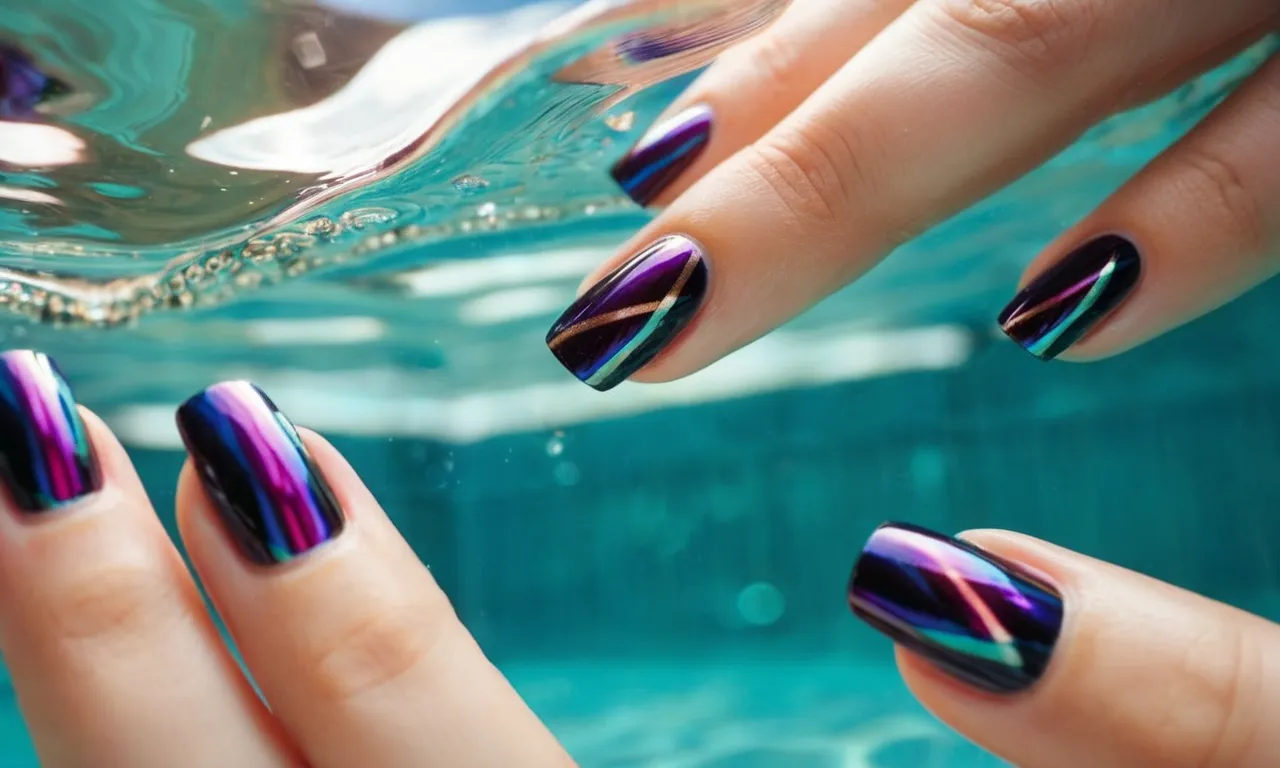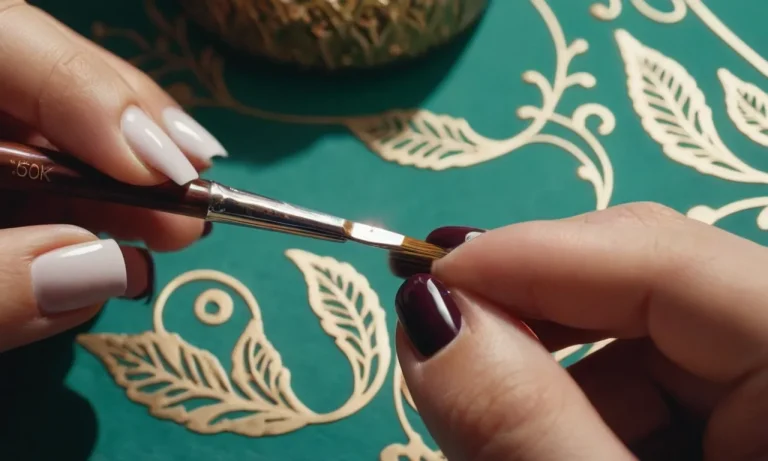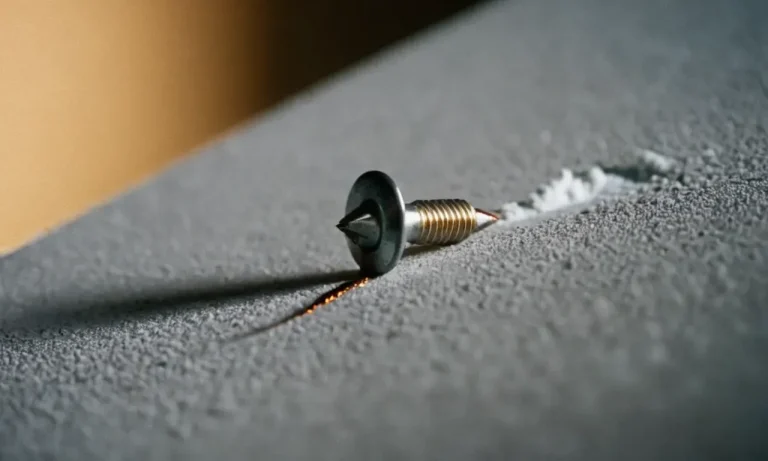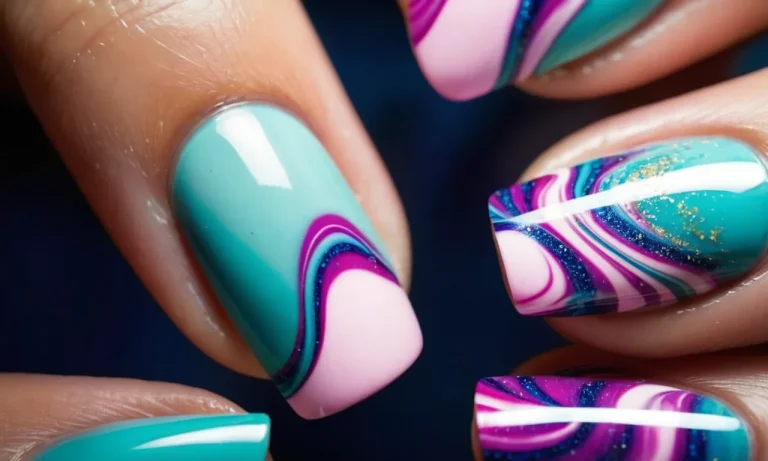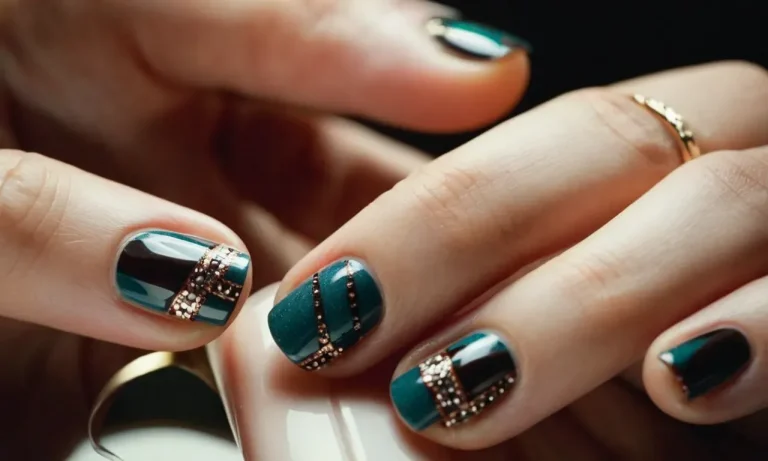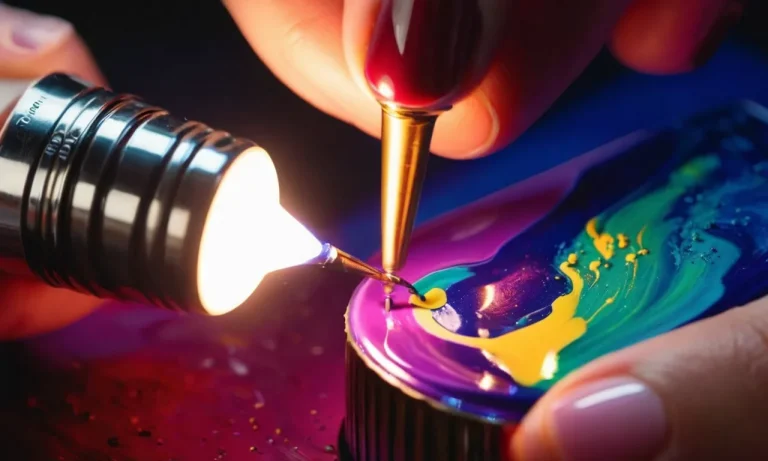Can You Wear Press On Nails In The Pool?
With summer here and pool days ahead, you may be wondering if your cute press on nails can withstand some time in the chlorinated water. Well, we have the details below on whether or not press ons and pools make a good match.
If you’re short on time, here’s a quick answer: Press on nails are generally not suitable for spending time in the pool as the water can cause them to lift or fall off faster. An occasional quick dip may be okay, but prolonged swimming is not recommended with press on manicures.
In this comprehensive guide, we will cover factors like chlorine damage, adhesion issues from water exposure, how long press ons tend to last in pool water, tips for making them last longer if you do decide to swim with them, and alternative nail options better suited for frequent swimmers.
How Pool Water Impacts the Adhesive on Press On Nails
Chlorine Can Damage the Nail Glue
The high levels of chlorine commonly found in swimming pools can weaken the adhesive used for press on nails (source). When the nail glue comes into contact with chlorinated water, the chemicals start breaking down the bonds that hold the artificial nails in place.
Over time, this leads to the press ons becoming loose or even falling off completely while swimming or playing in the pool.
Most nail glue used for press on nail sets is composed of cyanoacrylate. While this adhesive is strong initially, it is not waterproof and has low resistance to the oxidizing effects of chlorine. With regular exposure to pool water, the glue can become etched and degrade quicker than normal wear and tear.
Using a glue formulated specifically for press on nails can help mitigate this issue. But even salon-grade adhesives still carry some risk of damage from prolonged water exposure.
Moisture from the Water Compromises Bonding
On top of interacting negatively with pool chemicals, the moisture itself further compromises bonding and adhesion (source). When press on nails get wet, water seeps in between the artificial nail and natural nail surface.
This creates a slippery barrier making it easier for the press on to detach and peel off.
According to experts, moisture is one of the biggest bonding saboteurs for any type of false nails. The soaking effect of spending time in the pool softens the glue and surrounding nail layers. Over time, the weakened glue gives way to the water intrusion and pressure of swimming activities.
Frequent drying and rewetting of the press ons also stresses the adhesive in ways that accelerate loss of bonding effectiveness.
| With moisture intrusion: | Press on nails can detach in as little as 30 minutes of pool time |
| With dry wear: | Press on nails can last 5-7 days before needing replacement |
Preventing water from getting beneath press on nails is difficult during aquatic activities. But starting with a flexible, water-resistant glue can slow down bonding breakdown from moisture exposure in the pool.
Typical Longevity of Press Ons in the Pool
Most Fall Off Within 1-2 Pool Sessions
Let’s be real – press on nails and water don’t exactly mix well. According to nail experts, most press on nail sets will start lifting and falling off after just 1-2 pool sessions lasting 30-60 minutes. The exposure to moisture, chemicals, and general wear and tear take a toll.
So if you’re hoping your press ons will last all summer long as you lounge by the pool, you’ll likely be disappointed.
The adhesive used for press on nails is simply not designed for water submersion. As soon as your nails hit the pool, spa, or ocean, that glue will begin softening and losing its grip. Frequent dunks will hasten this process even more.
before you know it, your beautiful nails will be floating away one by one.
There are a few techniques that can extend the life of press ons in water slightly, like using extra glue or clear polish. But even then, they still may only tack on an extra swim or two. If nice nails that last are a priority, gel or acrylic extensions done by a professional are a much better bet.
Depends on Exposure Time and Bonding Technique
While it’s true most press ons won’t hold up long term with frequent water exposure, their longevity depends on a few key factors:
- How long you spend in the water – Quick dips are less damaging than longer swims
- How well they are bonded – Extra glue or activators can strengthen adhesion
- How rough you are on your hands – Gentle wear extends duration more
- The quality and fit – Better quality and properly sized last longer
By keeping water exposure to a minimum, using nail prep products to really cement them on there, and being cognizant of how you use your hands, you may get 4-5 wears from a press on set instead of 1-2.
But factoring in the cost, getting a salon service ends up being much more economical in the long run.
| Nail Type | Longevity in Pool |
|---|---|
| Basic Press Ons | 1-2 sessions |
| Press Ons with Extra Glue | 2-4 sessions |
| Gel/Acrylic Extensions | Several weeks |
As that comparison shows, professional nail extension services are really the only way to go if you want your manicure looking fab all season long, without limitations on wear like with press ons. But for the occasional pool party, a good prep routine can get a press on set through a brief splash session or two.
Tips for Making Press Ons Last Longer in The Pool
Apply a Protective Top Coat
Applying a protective top coat like a gel top coat or acrylic top coat over your press on nails can help seal in the glue and prevent water from seeping underneath (1). These clear, glossy top coats act like a shield to protect the adhesive bond between your natural nail and the press on.
According to nail care experts at The Beauty Studio (beautystudio.com), a top coat can make press on nails last 5-7 days longer by guarding against water damage in the pool.
Use Extra Adhesive Glue
Using extra nail glue underneath your press on nails is key for pool wear. Water can loosen the factory-applied adhesive over time, allowing press ons to pop off suddenly in water. Applying 1-2 additional tiny drops of nail glue around the edges of each press on before swimming reinforces the bond so water is less likely to undermine it.
Cyanoacrylate glues designed for press on nails specifically, like KISS Glue On Nail Adhesive, tend to have the strongest holding power.
Avoid Long Swims at First
When you first apply your press on nails, try to avoid swimming for long periods of time. According to the salon professionals at Nail Career Education, it’s best to allow the nail glue 12-24 hours to fully cure and harden before exposing press ons to the soaking effects of pool water.
This allows for the strongest bond possible. After that initial curing period, your nails should be pool-ready. But even then, limit swims to 1 hour or less to keep the glue from softening too much.
With these handy preparation tips, you can confidently wear stylish press on nails in the pool without worrying about a surprise mid-swim manicure malfunction. A protective top coat, extra glue, and some sensible timing makes press on nails and summer swims a perfect match!
Better Nail Options for Frequent Swimmers
Dip Powder Manicures
Dip powder manicures are a great option for swimmers who want durable, chip-resistant nails that can withstand frequent exposure to water. Unlike traditional polish, dip powders form a thick, protective layer over the natural nail that is less likely to lift or peel off in the pool (1).
The powder is activated by a resin or glue to bind it to the nail bed. Most salons use SNS dip powder, which can last 2-3 weeks or more on the nails compared to just 1 week for regular polish.
While dip powders are not 100% waterproof, they have superior adhesion and strength over other polish types. After dipping nails in the powder, they are finely shaped and buffed to create an ultra-smooth finish.
Many dip powder kits also contain a built-in ridge filler, helping to create a protective barrier over the nail. This helps prevent lifting and can minimize water penetration under the polish. However, always wearing gloves in the pool is recommended to maximize the life of any manicure.
Gel Manicures
Gel manicures are also a top choice for frequent swimmers. Gel polish formulas are more flexible and durable than traditional polish. After being painted on the nail, gels are cured under an LED or UV lamp, causing them to harden and adhere to the nail (2).
This creates a glossy, chip-resistant finish that can last up to 3 weeks with proper care.
While gels may not have the thickness of dip powders, they still provide a protective layer over the natural nail that can better withstand exposure to pool chemicals and water. Using a base coat underneath gel polish can help it adhere better and prevent lifting or peeling.
However, gels can become brittle over time, so avoiding excessive water exposure by wearing gloves can help maintain the manicure. Overall, gel manicures offer a great balance of longevity, glossy color, and damage resistance for regular swimmers.
Acrylics
Acrylic nails are very durable artificial nails that can be a good option for frequent swimmers. They are formed by applying a liquid acrylic resin and polymer powder to the natural nails which hardens upon curing with an LED or UV lamp (3).
The acrylic is shaped and buffed to the desired length and look. Acrylic nails are very hard, thick, and water-resistant compared to natural nails or even gel/dip manicures.
While acrylics do not repel water entirely, their sturdy coverage of the nail plate can help protect from chipping, breaking, or excessive moisture exposure in the pool. They can last over a month on average with fills needed to maintain their appearance over time.
One downside is that long acrylic nails may break more easily if they get caught on materials in the water. Thus, keeping them at a shorter, moderate length is best for regular swimmers. It’s also ideal to apply a fresh top coat after swimming to help seal in moisture and prevent possible lifting or cracking.
Conclusion
While press on nails can look very cute poolside, they tend to lift and fall off faster when exposed to prolonged moisture. An occasional quick dip may be fine, but frequent or long swims are not recommended.
If you want to sport some stylish nails while also swimming this summer, consider more water-resistant options like dip powder, gel, or acrylic manicures instead. Or save the press ons for when you plan to stay out of the water!

